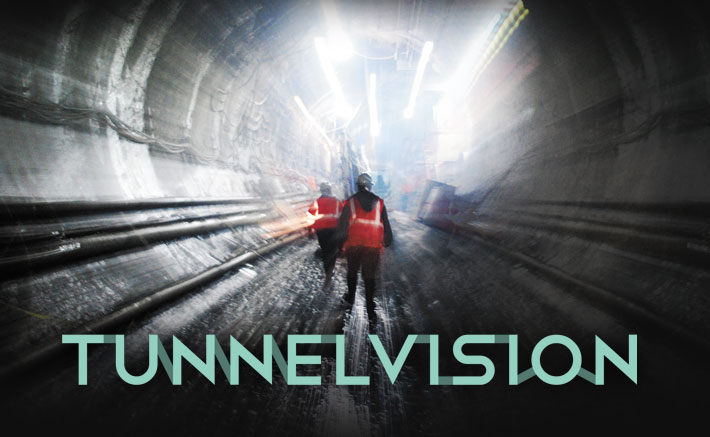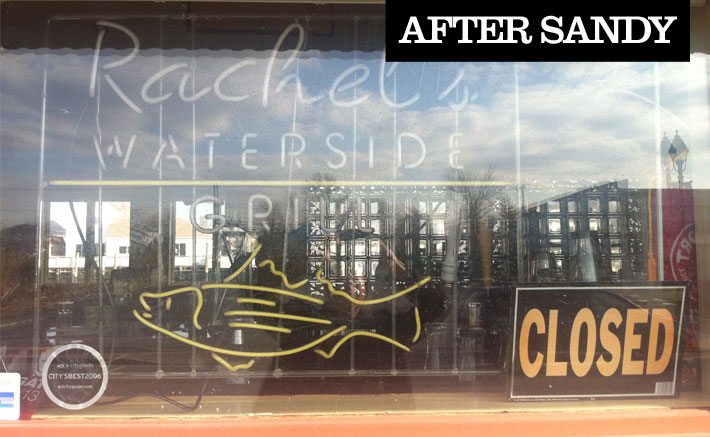
No Time Like the Right Time
Transportation experts agree that time delays and cost overruns can be expected with any project this size (highway construction is another case in point). Look how long it’s taken to complete the Second Avenue Subway, now scheduled to be finished in December, 2016. It was first proposed in 1929, but before it could go to contract, the stock market crashed. Now both projects are at the mercy of the Great Recession.
“My job is to build,” says MTA Capital Construction’s project manager Alan Paskoff. “We’re full speed ahead.”
LIRR President Helena Williams has her fingers crossed that trains will be running through the East Side Access project by 2016. She plans to be at the ribbon-cutting.
“By bringing people directly to Grand Central we’ll save them that 20-minute subway ride in the morning, a 20-minute ride in the afternoon,” she tells the Press. “If you add all that up, one of my staff people says, that’s like 20 vacation days a year.”
One big benefit she foresees for Long Islanders is that when this project is done, it will boost property values all along the railroad’s territory. “We will be protecting the Long Island housing market when this construction is completed, and we can bring service to the Upper East Side.”
Williams gives special credit to Long Island’s Congressional delegation for keeping the federal dollars flowing. “If it weren’t for Peter King [R-Seaford], we would not have gotten the funding to initiate the project.”
“I will continue to do all that I can to secure funding for the LIRR East Side Access project,” King tells the Press. “Very simply, this project is not only vital for our economy but will save hard-working Long Islanders extra hours.”
On the other side of the aisle, his Democratic colleague, Rep. Steve Israel (D-Dix Hills), agrees. “China has invested more than $200 billion in high speed rail and I refuse to take a back seat,” Israel says. “Infrastructure investments like East Side Access create jobs, expand our economy and improve productivity. Every $1 billion invested in infrastructure creates 47,500 jobs and more than $6 billion in economic activity. East Side Access remains a priority for Long Islanders and a key factor in our future economic growth.”
Last June, FTA administrator Peter Rogoff wrote to the Senate Banking, Housing and Urban Affairs committee that the news from the MTA regarding “the cost overruns and schedule delays” for the Second Avenue Subway and East Side Access “is grim.” A source at the FTA tells the Press “we’ve made some progress” in those areas, and that the Obama administration’s funding of the FTA for 2012 “more than doubled our budget.” He said that the just-passed 2011 budget, despite all the partisan acrimony on Capitol Hill over federal spending, “did not severely impact the agency.”
Now the focus shifts to Albany, where Gov. Andrew Cuomo will have to decide how to keep the MTA’s mega-projects on track.
“The East Side Access and Second Avenue Subway projects are expected to dramatically improve mobility throughout the region,” says FTA spokesman Brian Farber. “It has been FTA’s goal to sign a revised full funding grant agreement detailing the new schedule and budget for the completion of these two important projects. However, the FTA is waiting for the MTA to identify state and local funding sources for the higher costs associated with their completion and operation.”
Cuomo’s state budget closed a $10 billion gap, leaving little room for funding the tunnel projects. Mass transit advocate Gene Russianoff, head of the New York Public Interest Research Group’s Straphangers Campaign, is worried about the present condition of our trains and subways, let alone spending on the East Side Access project.
“What advocates like me hope is that by the end of the year, Albany figures out a way to allow a substantial portion of the projects to go ahead,” he says. “Without these kinds of investments New York is screwed. But you can’t just let the tracks go without repair for three years!”
Jeffrey Zupan, senior fellow for transportation at the Regional Plan Association, is more optimistic. “As you can see,” he tells the Press, “it’s mostly built. They’re in what I would call the home stretch! Our take is that we’re not ready to give up on these expansion projects just because the [budget] gap is so great. We have to go for both.”
“We have some big challenges ahead,” observes Kate Slevin, executive director of the Tri-State Transportation Campaign. “After this year, the MTA has no capital funding. Right now we’re okay but we don’t know what’s going to happen in the future. We don’t really want to stop these projects once they’re under construction because it costs so much to halt and then go to the federal government for money. It’s a big mess.”
But it’s nothing compared to the sludge at the bottom of the Grand Central caverns.
Click for more photos and exclusive video at www.longislandpress.com/tunnel-vision






